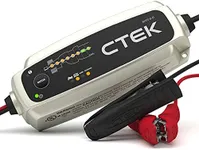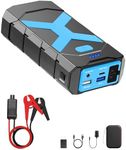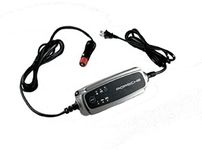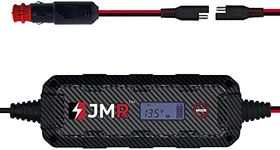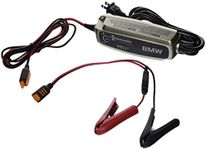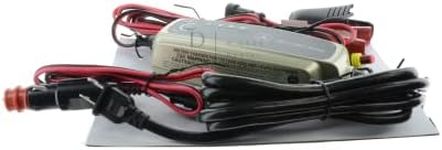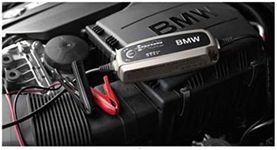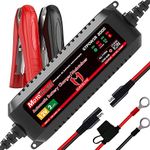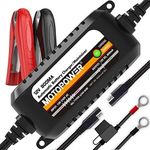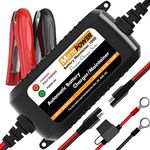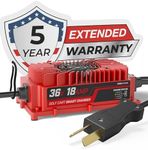Buying Guide for the Best Battery Charge Cars
Choosing the right battery charger for your car is essential to ensure your vehicle's battery remains in good health and performs optimally. A good charger can extend the life of your battery, save you from unexpected breakdowns, and ensure your car starts reliably. When selecting a battery charger, consider the type of battery your car uses, the charger's compatibility, and the features that best suit your needs. Here are some key specifications to consider when choosing a battery charger for your car.Battery Type CompatibilityBattery type compatibility is crucial because different car batteries require different charging methods. Common types include lead-acid, AGM (Absorbent Glass Mat), and lithium-ion batteries. Ensure the charger you choose is compatible with your car's battery type. For example, if you have a lead-acid battery, a standard charger will suffice, but AGM and lithium-ion batteries may require more specialized chargers. Check your car's manual or battery label to determine the type of battery you have.
Charging AmperageCharging amperage refers to the rate at which the charger delivers current to the battery. This is important because it affects how quickly your battery will charge. Chargers typically range from 2 to 10 amps. Lower amperage chargers (2-4 amps) are suitable for maintaining a battery or slow charging, which is gentler on the battery and ideal for long-term maintenance. Higher amperage chargers (6-10 amps) are better for quickly charging a depleted battery. Choose a charger based on how quickly you need to charge your battery and how often you plan to use it.
Automatic vs. Manual ChargingAutomatic chargers have built-in sensors that detect when the battery is fully charged and automatically switch to a maintenance mode to prevent overcharging. This feature is important for convenience and battery health, as overcharging can damage the battery. Manual chargers require you to monitor the charging process and disconnect the charger once the battery is fully charged. If you prefer a hands-off approach and want to ensure your battery is protected, an automatic charger is the better choice. However, if you are comfortable monitoring the process, a manual charger can be a more cost-effective option.
Safety FeaturesSafety features in a battery charger are essential to protect both the user and the battery. Important safety features include reverse polarity protection, which prevents damage if the charger is connected incorrectly, and overcharge protection, which stops the charging process once the battery is fully charged. Other useful features include short-circuit protection and thermal protection to prevent overheating. When choosing a charger, prioritize models with these safety features to ensure safe and reliable operation.
Portability and SizePortability and size are important considerations if you need to use the charger in different locations or store it in a small space. Compact and lightweight chargers are easier to carry and store, making them ideal for on-the-go use or for keeping in your car. Larger chargers may offer more features or higher amperage but can be cumbersome to move around. Consider where and how you will use the charger to determine the best size and portability for your needs.
Additional FeaturesAdditional features can enhance the functionality and convenience of a battery charger. Some chargers come with built-in battery testers, which can help you diagnose battery health issues. Others may have multiple charging modes, such as trickle charging for long-term maintenance or fast charging for quick top-ups. Some advanced models offer digital displays that provide real-time information about the charging process. Consider which additional features would be most beneficial for your specific needs and choose a charger that offers those capabilities.
